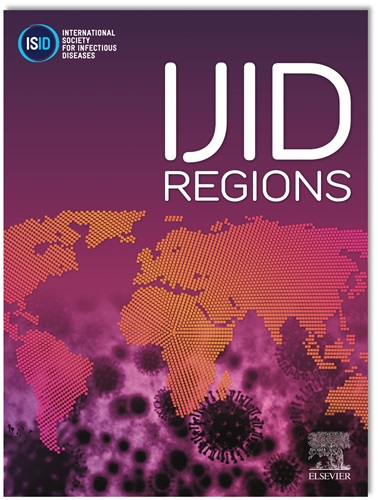Molecular xenomonitoring of Wuchereria bancrofti infection in three different evaluation settings of lymphatic filariasis elimination programme in India
IF 4.8
2区 医学
Q1 INFECTIOUS DISEASES
引用次数: 0
Abstract
Objectives
Molecular xenomonitoring (MX) is a recommended post-validation surveillance tool for detecting early signs of lymphatic filariasis (LF) transmission. This study reports the MX results for Culex quinquefasciatus transmitted Wuchereria bancrofti in three evaluation units (EUs) in different settings of LF elimination in India.
Methods
Female Cx. quinquefasciatus mosquitoes were collected using gravid traps from 150 households in each EU. Two pools of 25 mosquitoes from each household were assayed by real-time quantitative polymerase chain reaction for W. bancrofti DNA and RNA. The agreement between MX and the transmission assessment survey (TAS) in the mass drug administration (MDA) stopping decision was assessed. Additionally, the microfilaria (Mf) prevalence was compared in TAS-failed EU.
Results
Vector infection prevalence was 0.05% and 0.07% in TAS-cleared EUs and 1.85% in TAS-failed EU. MX corroborated the TAS decision in all three settings. Mf prevalence was >1% at five sites in TAS-failed EU. Infective mosquitoes were detected in the TAS2 passed and TAS-failed EUs. The cost of MX per pool was between US $ 26.0 and 27.9 in different settings.
Conclusions
MX is a potential tool for evaluating different stages of post-MDA treatment in the LF elimination program. The MX detects transmission risk areas that can be confirmed by human surveys for appropriate response.
求助全文
约1分钟内获得全文
求助全文
来源期刊
CiteScore
18.90
自引率
2.40%
发文量
1020
审稿时长
30 days
期刊介绍:
International Journal of Infectious Diseases (IJID)
Publisher: International Society for Infectious Diseases
Publication Frequency: Monthly
Type: Peer-reviewed, Open Access
Scope:
Publishes original clinical and laboratory-based research.
Reports clinical trials, reviews, and some case reports.
Focuses on epidemiology, clinical diagnosis, treatment, and control of infectious diseases.
Emphasizes diseases common in under-resourced countries.

 求助内容:
求助内容: 应助结果提醒方式:
应助结果提醒方式:


